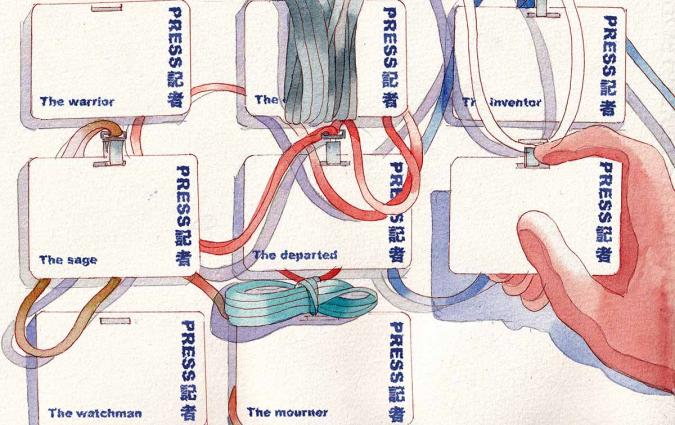Lessons in Innovation: How International News Organisations Combat Disinformation through Mission-Driven Journalism
DOI: 10.60625/risj-mpg4-r547
This report examines how digital-born news media in the Global South have developed innovative reporting and storytelling practices in response to growing disinformation problems. Based on field observation and interviews at Rappler in the Philippines, Daily Maverick in South Africa, and The Quint in India, we show that all three organisations combine a clear sense of mission and a commitment to core journalistic values with an active effort to find new ways of identifying and countering disinformation, based on a combination of investigative journalism fact-checking, data and social network analysis, and sometimes strategic collaboration with both audiences and platform companies. In the process, each of these organisations are developing new capacities and skills, sharing them across the newsroom, differentiating themselves from their competitors, and potentially increasing their long-term sustainability, in ways we believe other news media worldwide could learn from.
All three case organisations we examine here are digital-born, mobile-first (or in the process of becoming so), and at least in part enabled by social media in terms of audience development and reach. While smaller than their most important legacy media competitors, all have built significant online audiences across their websites and social media channels. They represent a strategic sample of leading digital-born commercial news media operating with limited resources in challenging media, political, and press freedom environments in the Global South. All of them face the ‘unintended consequences’ of digital innovation and technology (Posetti 2018) particularly keenly, both in terms of increasing problems of disinformation (Nielsen and Graves 2017; Fletcher 2018) in their countries, and more specifically in terms of direct attacks on them, with social media leveraged by some political actors, orchestrated ‘troll networks’, and members of the public directing abuse and threats at the organisations and their staff.
We document how Rappler, the Daily Maverick, and The Quint have all responded to these challenges through a combination of doubling down on their journalistic mission, strongly linked to the maintenance of the role of the free press in democracies and established journalistic values, along with an active investment in innovative forms of reporting and storytelling applied to combating misinformation and disinformation (Ireton and Posetti 2018). These include intensive, multi-layered approaches to fact-checking, the use of data journalism and network analysis, and in some cases collaboration with platforms and audiences to try to counter disinformation. They do this without access to the revenues or resources that many legacy media have, especially in the West. Through their constantly evolving response to rapidly developing problems of disinformation, all of the organisations studied are acquiring new knowledge and skills that can power their public interest journalism and community engagement more broadly in the digital age. They do this work by placing their audiences first, with an emphasis on building trust, in the belief that they are helping their communities better understand and navigate the digital media environment, while also developing deeper appreciation for the role of media freedom in open societies.
Additionally, they believe that this ‘pivot to defending truth’, as one Rappler manager described their strategic defence against disinformation, might also help build new revenue streams by differentiating them from competitors, giving them a more compelling case for building, for example, membership models, and helping them acquire expertise that can be monetised through consultancy services and other business-to-business channels. Their innovative reporting and storytelling responses to disinformation are thus not ‘random acts of innovation’, nor are they driven by ‘shiny new things’ (Posetti 2018). Rather, they combine a clear mission, commitment to core editorial values and foundational journalism practices, audience-centricity, and selective investment in specific new initiatives designed to create public value and impact. These initiatives, they say, set them apart from competitors, and help sustain their organisations. This can be understood as an expression of the ‘ingenuity of necessity’ associated with development in the Global South (Posetti 2018). In particular, we identify nine key lessons from the ways in which Rappler, the Daily Maverick, and The Quint work with innovative reporting and storytelling responses to disinformation problems.
Key Lessons
- A clear mission helps focus innovation.
- Mission-driven journalism may divide audiences, but it is not the same as partisanship.
- Ability to ‘pivot’ in response to a crisis is an innovation marker.
- Audiences can be part of journalism innovation.
- Reporting can fuel organisational innovation.
- Innovation requires investment in new skills, tools, techniques, and training (no matter how limited resources are).
- Innovation can be based on core values but also require constant re-examination of whether a more fundamental shift is necessary.
- Innovations need to be shared across the whole news organisation to avoid siloing.
- With a clear mission, it is possible to do important, innovative journalism for a large audience even with limited resources.
Published by the Reuters Institute for the Study of Journalism with the support of the Facebook Journalism Project.

This report can be reproduced under the Creative Commons licence CC BY. For more information please go to this link.








